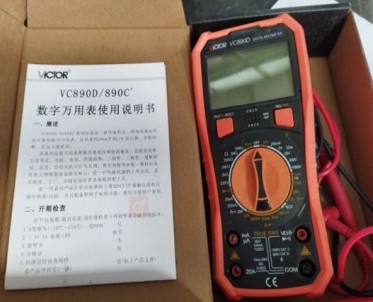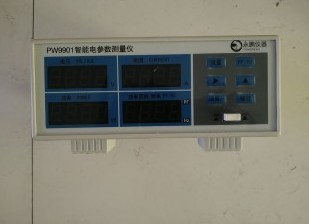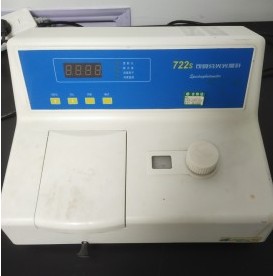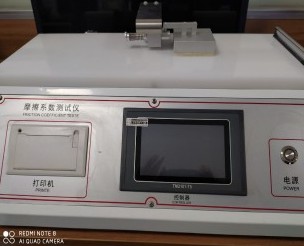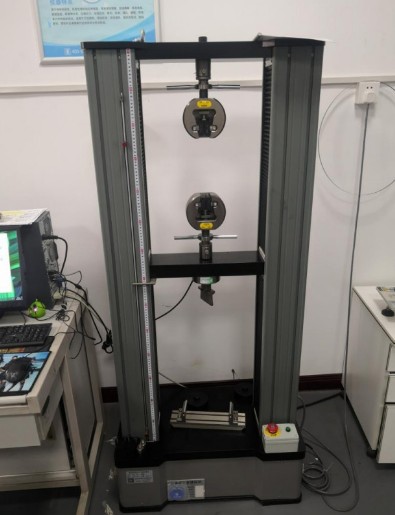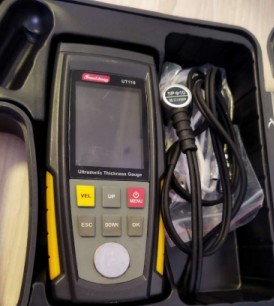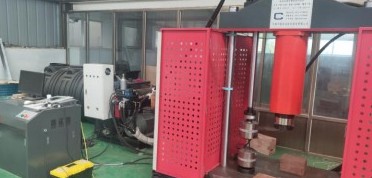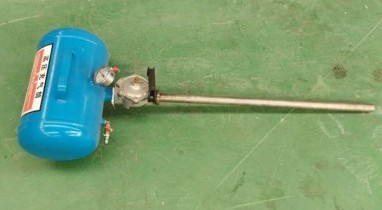倾点检测标准相关信息
GB/T 26985-2018 原油倾点的测定
简介:
信息:ICS:75.040 CCS:E21 发布:2018-12-28 00:00:00.0 实施:2019-07-01 00:00:00.0
ASTM D97-17b 石油产品倾点标准试验方法
简介:
信息:ICS:75.080 CCS: 发布:2017-12-15 实施:
ASTM D5949-14 石油产品倾点的标准试验方法&40;自动压力脉冲法&41
简介:
信息:ICS:75.080 CCS: 发布:2014-05-01 实施:
GB/T 26985-2011 原油倾点的测定
简介:警告--使用本标准的人员应有正规实验室工作的实际经验。本标准并未指出所有可能的安全问题。使用者有责任采取适当的安全和健康措施,并保证符合国家有关法规规定的条件。本标准规定了测定原油倾点的方法,包括最高(上)倾点和最低(下)倾点。 本标准适用于倾点不低于-36 ℃ 、水含量的质量分数不大于0. 5%的原油。
信息:ICS:75.040 CCS:E21 发布:2011-09-29 实施:2012-01-01
ASTM D5346-17 油脂和软化剂中使用的石油的倾点的标准测试方法
简介:
信息:ICS:75.080 CCS: 发布:2017-09-01 实施:
ASTM D7346-14 石油产品无流动点和倾点的标准试验方法
简介:
信息:ICS:75.080 CCS: 发布:2014-05-01 实施:
GB/T 26985-2011 原油倾点的测定
简介:警告--使用本标准的人员应有正规实验室工作的实际经验。本标准并未指出所有可能的安全问题。使用者有责任采取适当的安全和健康措施,并保证符合国家有关法规规定的条件。本标准规定了测定原油倾点的方法,包括最高(上)倾点和最低(下)倾点。 本标准适用于倾点不低于-36 ℃ 、水含量的质量分数不大于0. 5%的原油。
信息:ICS:75.040 CCS:E21 发布:2011-09-29 实施:2012-01-01
ASTM D97-17a 石油产品倾点标准试验方法
简介:
信息:ICS:75.080 CCS: 发布:2017-05-15 实施:
ASTM D5950-14 石油产品倾点标准试验方法
简介:
信息:ICS:75.080 CCS: 发布:2014-05-01 实施:
GB/T 3535-2006 石油产品倾点测定法
简介: 警告:本标准的应用可能涉及到某些危险性的材料、操作和设备,但并未对与此有关的所有安全问题都提出建议。用户在使用本标准前有责任制定相应的安全和保护措施,并明确其受限制的适用范围。 本标准规定了测定石油产品倾点的方向。同时也叙述了测定燃料油、重质润滑油基础油和含有残渣燃料组分的产品下倾点(参见6.10)的试验步骤。
信息:ICS:75.080 CCS:E30 发布:2006-01-23 实施:2006-10-01
ASTM D5853-17 原油倾点标准试验方法
简介:
信息:ICS:75.040 CCS: 发布:2017-05-01 实施:
ASTM D5985-02(2014) 石油产品倾点的标准试验方法&40;旋转法&41
简介:
信息:ICS:75.080 CCS: 发布:2014-01-01 实施:
GB/T 3535-1983 石油倾点测定法
简介: 本方法适用于测定石油和石油产品的倾点。试样在规定的条件下冷却时,能够流动的最低温度,称为倾点。
信息:ICS:75.080 CCS:E04 发布:1983-03-09 实施:1983-12-01
ASTM D97-17 石油产品倾点标准试验方法
简介:
信息:ICS:75.080 CCS: 发布:2017-01-01 实施:
ASTM D6892-03(2014) 石油产品倾点标准试验方法
简介:
信息:ICS:75.080 CCS: 发布:2014-01-01 实施:
ASTM D97-17b(2022) 石油产品倾点的标准试验方法
简介:
信息:ICS:75.080 CCS: 发布:2022-11-01 实施:
ASTM D5346-2017 测定加脂剂和软化化合物用石油倾点的标准试验方法
简介: 3.1x00a0;This test method is intended to determine the pour point of petroleum oils used in the softening and stuffing of leather, as well as those used in the manufacture of products for such purpose. The pour point of petroleum oils is measured for the purpose of quality assurance. 1.1x00a0;This test method covers the determination of the pour point of petroleum oils used in the softening and stuffing of leather, and in the manufacture of fatliquors and other softening and stuffing compounds. This test method was derived from Test Method D97 and ALCA Method H-18. 1.2x00a0;The values stated in SI units are to be regarded as standard. No other units of measurement are included in this standard. 1.3x00a0;This standard does not purport to address all of the safety concerns, if any, associated with its use. It is the responsibility of the user of this standard to establish appropriate safety, health and environmental practices and determine the applicability of regulatory limitations prior to use. 1.4x00a0;This international standard was developed in accordance with internationally recognized principles on standardization established in the Decision on Principles for the Development of International Standards, Guides and Recommendations issued by the World Trade Organization Technical Barriers to Trade (TBT) Committee.
信息:ICS:75.080 CCS:E30 发布:2017 实施:
ASTM D7346-2014 石油产品不流动点和倾点的标准试验方法
简介: 5.1x00a0;The no flow point of a petroleum product is an index of the lowest temperature of its utility for some applications. Flow characteristics, such as no flow point, can be critical for the proper operation of lubricating systems, fuel systems, and pipeline operations. 5.2x00a0;Petroleum blending operations require precise measurement of the no flow point. 5.3x00a0;This test method can determine the temperature of the test specimen with a resolution of 0.18201;x00b0;C at which either crystals have formed or viscosity has increased sufficiently, or both, to impede flow of the petroleum product. 5.4x00a0;The pour point of a petroleum product is an index of the lowest temperature of its utility for certain applications. Flow characteristics, like pour point, can be critical for the correct operation of lubricating oil systems, fuel systems, and pipeline operations. 5.5x00a0;Petroleum blending operations require precise measurement of the pour point. 5.6x00a0;Pour point results from this test method can be reported at either 18201;x00b0;C or 38201;x00b0;C intervals. 5.7x00a0;This test method yields a pour point in a format similar to Test Method D97/IP15 when the 38201;x00b0;C interval results are reported. 5.8x00a0;This test method has better repeatability and reproducibility relative to Test Method D97/IP15 as measured in the 2011 interlaboratory test program (see 13.1.2). 1.1x00a0;This test method covers the determination of the no flow point temperature and pour point of petroleum products using an automatic instrument. 1.2x00a0;The measuring range of the apparatus is from x2013;958201;x00b0;C to 458201;x00b0;C, however the precision statements were derived only from samples with no flow point temperatures from x2013;778201;x00b0;C to +28201;x00b0;C and samples with pour point in the temperature range of x2013;588201;x00b0;C to +128201;x00b0;C. 1.3x00a0;Pour point results from this test method can be reported at 18201;x00b0;C or 38201;x00b0;C intervals. 1.4x00a0;The values stated in SI units are to be regarded as standard. No other units of measurement are included in this standard. 1.5x00a0;This standard does not purport to address all of the safety concerns, if any, associated with its use. It is the responsibility of the user of this standard to establish appropriate safety and health practices and determine the applicability of regulatory limitations prior to use.
信息:ICS:75.080 (Petroleum products in general) CCS:E30 发布:2014 实施:
ASTM D5949-16(2022) 石油产品倾点的标准试验方法(自动压力脉冲法)
简介:
信息:ICS:75.080 CCS: 发布:2022-07-01 实施:
ASTM D97-2017 石油产品倾点的标准试验方法
简介: 5.1x00a0;The pour point of a petroleum specimen is an index of the lowest temperature of its utility for certain applications. 1.1x00a0;This test method covers and is intended for use on any petroleum product.2 A procedure suitable for black specimens, cylinder stock, and nondistillate fuel oil is described in 8.8. The cloud point procedure formerly part of this test method now appears as Test Method D2500. 1.2x00a0;Currently there is no ASTM test method for automated Test Method D97 pour point measurements. 1.3x00a0;Several ASTM test methods offering alternative procedures for determining pour points using automatic apparatus are available. None of them share the same designation number as Test Method D97. When an automatic instrument is used, the ASTM test method designation number specific to the technique shall be reported with the results. A procedure for testing the pour point of crude oils is described in Test Method D5853. 1.4x00a0;The values stated in SI units are to be regarded as standard. No other units of measurement are included in this standard. 1.5 WARNINGx2014;Mercury has been designated by many regulatory agencies as a hazardous material that can cause central nervous system, kidney and liver damage. Mercury, or its vapor, may be hazardous to health and corrosive to materials. Caution should be taken when handling mercury and mercury containing products. See the applicable product Material Safety Data Sheet (MSDS) for details and EPAx2019;s websitex2014;http://www.epa.gov/mercury/faq.htmx2014;for additional information. Users should be aware that selling mercury and/or mercury containing products into your state or country may be prohibited by law. 1.6x00a0;This standard does not purport to address all of the safety concerns, if any, associated with its use. It is the responsibility of the user of this standard to establish appropriate safety and health practices and determine the applicability of regulatory limitations prior to use.
信息:ICS:75.080 CCS:E30 发布:2017 实施:
ASTM D5950-2014 石油产品倾点40;自动倾斜法41的标准试验方法
简介: 5.1x00a0;The pour point of a petroleum product is an index of the lowest temperature of its utility for certain applications. Flow characteristics, like pour point, can be critical for the correct operation of lubricating oil systems, fuel systems, and pipeline operations. 5.2x00a0;Petroleum blending operations require precise measurement of the pour point. 5.3x00a0;This test method can determine the pour point of the test specimen with a resolution of 1.08201;x00b0;C. 5.4x00a0;Test results from this test method can be determined at either 18201;x00b0;C or 38201;x00b0;C intervals. 5.5x00a0;This test method yields a pour point in a format similar to Test Method D97/IP15 when the 38201;x00b0;C interval results are reported.Note 3x2014;Since some users may wish to report their results in a format similar to Test Method D97 (in 38201;x00b0;C intervals) the precisions were derived for the temperatures rounded to the 38201;x00b0;C intervals. For statements on bias relative to Test Method D97, see 13.3. 5.6x00a0;This test method has better repeatability and reproducibility relative to Test Method D97/IP15 as measured in the 1998 interlaboratory test program. (See Section 13.) 1.1x00a0;This test method covers the determination of pour point of petroleum products by an automatic instrument that tilts the test jar during cooling and detects movement of the surface of the test specimen with an optical device. 1.2x00a0;This test method is designed to cover the range of temperatures from x2212;668201;x00b0;C to +518201;x00b0;C; however, the range of temperatures included in the 1992 interlaboratory test program only covered the temperature range from x2212;398201;x00b0;C to +68201;x00b0;C, and the range of temperatures included in the 1998 interlaboratory test program was x2212;518201;x00b0;C to x2212;118201;x00b0;C. (See Section 13.) 1.3x00a0;Test results from this test method can be determined at 18201;x00b0;C or 38201;x00b0;C intervals. 1.4x00a0;This test method is not intended for use with crude oils.Note 1x2014;The applicability of this test method on residual fuel samples has not been verified. For further information on applicability, refer to 13.4. 1.5x00a0;The values stated in SI units are to be regarded as standard. No other units of measurement are included in this standard. 1.6x00a0;This standard does not purport to address all of the safety concerns, if any, associated with its use. It is the responsibility of the user of this standard to establish appropriate safety and health practices and determine the applicability of regulatory limitations prior to use.
信息:ICS:75.080 (Petroleum products in general) CCS:E30 发布:2014 实施:
ASTM D5346-17(2021) 加脂剂和软化化合物中石油倾点测定的标准试验方法
简介:
信息:ICS:75.080 CCS: 发布:2021-12-01 实施:
ASTM D5853-16 原油倾点标准试验方法
简介:
信息:ICS:75.040 CCS: 发布:2016-12-01 实施:
ASTM D5949-2014 石油产品倾点40;自动压力脉冲法41的自动标准试验方法
简介: 5.1x00a0;The pour point of a petroleum product is an index of the lowest temperature of its utility for certain applications. Flow characteristics, like pour point, can be critical for the correct operation of lubricating oil systems, fuel systems, and pipeline operations. 5.2x00a0;Petroleum blending operations require precise measurement of the pour point. 5.3x00a0;In most cases, this test method does not require the use of mechanical refrigeration apparatus (see 7.1). 5.4x00a0;This test method yields a pour point in a format similar to Test Method D97/IP8201;15 when the 38201;x00b0;C interval results are reported.Note 2x2014;Since some users may wish to report their results in a format similar to Test Method D97 (in 38201;x00b0;C intervals) the precisions were derived from the temperatures rounded to the 3x00b0; intervals. For statements on bias relative to Test Method D97, see 13.3. 5.5x00a0;Test results from this test method can be determined at either 18201;x00b0;C or 38201;x00b0;C intervals. 5.6x00a0;This test method has better repeatability and reproducibility relative to Test Method D97/IP8201;15 as measured in the 1992 and 1998 interlaboratory test programs.4 1.1x00a0;This test method covers the determination of pour point of petroleum products by an automatic instrument that applies a controlled burst of nitrogen gas onto the specimen surface while the specimen is being cooled and detects movement of the surface of the test specimen with an optical device. 1.2x00a0;This test method is designed to cover the range of temperatures from8201;x2212;578201;x00b0;C to8201;+518201;x00b0;C. However, the range of temperatures included in the 1992 interlaboratory test program only covered the temperature range from 8201;x2212;398201;x00b0;C to8201;+68201;x00b0;C and the range of temperatures included in the 1998 interlaboratory test program was from x2212;518201;x00b0;C to x2212;118201;x00b0;C. (see 13.4). 1.3x00a0;Test results from this test method can be determined at 18201;x00b0;C or 38201;x00b0;C testing intervals. 1.4x00a0;This test method is not intended for use with crude oils.Note 1x2014;The applicability of this test method or residual fuel samples has not been verified. For further information on applicability, refer to 13.4. 1.5x00a0;The values stated in SI units are to be regarded as standard. No other units of measurement are included in this standard. 1.6x00a0;This standard does not purport to address all of the safety concerns, if any, associated with its use. It is the responsibility of the user of this standard to establish appropriate safety and health practices and determine the applicability of regulatory limitations prior to use.
信息:ICS:75.080 (Petroleum products in general) CCS:E30 发布:2014 实施:
KS M ISO 3016-2021 天然或合成来源的石油和相关产品.倾点的测定
简介:
信息:ICS:75.080 CCS: 发布:2021-05-14 实施:
ASTM D5949-16 石油产品倾点标准试验方法(自动压力脉动法)
简介:
信息:ICS:75.080 CCS: 发布:2016-04-01 实施:
GOST 32463-2013 石油制品. 自动倾斜法倾点的测定
简介:
信息:ICS:75.100 CCS: 发布:2013 实施:2015-01-01
ASTM D7346-15(2021) 石油产品和液体燃料无流点和倾点的标准试验方法
简介:
信息:ICS:75.080 CCS: 发布:2021-04-01 实施:
ASTM D97-16 石油产品倾点标准试验方法
简介:
信息:ICS:75.080 CCS: 发布:2016-01-01 实施:
ASTM D97-12 石油产品倾点标准试验方法
简介:
信息:ICS:75.080 CCS: 发布:2012-12-01 实施:
NF T60-530-1/A1-2020 润滑剂、工业用油和相关产品(L类). C族(齿轮). 第1部分: 用于封闭式齿轮系统的润滑剂的规格. 修改件1: 根据ISO 3016,CKTG, CKES, CKPG 和CKPR类倾点. 范围的变化
简介:Le présent document amende et modifie la norme NF ISO 12925-1, de septembre 2019, pour modifier les limites de spécification du point d'écoulement selon l'ISO 3016 des catégories CKTG, CKES, CKPG et CKPR.
信息:ICS: CCS:Y76 发布:2020-11-07 实施:2020-11-07
GOST 33910-2016 石油产品. 倾点的测定. 自动压力脉冲法
简介:
信息:ICS:75.080 CCS: 发布:2016 实施:2018-07-01
ASTM D5950-12a 石油产品倾点的标准试验方法(自动倾斜法)
简介:
信息:ICS:75.080 CCS: 发布:2012-12-01 实施:
JJF 1869-2020 石油产品倾点浊点测定仪校准规范
简介:
信息:ICS: CCS:0 发布:2020-09-11 实施:2021-03-11
ASTM D97-2016 石油产品倾点的标准试验方法
简介: 5.1x00a0;The pour point of a petroleum specimen is an index of the lowest temperature of its utility for certain applications. 1.1x00a0;This test method covers and is intended for use on any petroleum product.2 A procedure suitable for black specimens, cylinder stock, and nondistillate fuel oil is described in 8.8. The cloud point procedure formerly part of this test method now appears as Test Method D2500. 1.2x00a0;Currently there is no ASTM test method for automated Test Method D97 pour point measurements. 1.3x00a0;Several ASTM test methods offering alternative procedures for determining pour points using automatic apparatus are available. None of them share the same designation number as Test Method D97. When an automatic instrument is used, the ASTM test method designation number specific to the technique shall be reported with the results. A procedure for testing the pour point of crude oils is described in Test Method D5853. 1.4x00a0;The values stated in SI units are to be regarded as standard. No other units of measurement are included in this standard. 1.5 WARNINGx2014;Mercury has been designated by many regulatory agencies as a hazardous material that can cause central nervous system, kidney and liver damage. Mercury, or its vapor, may be hazardous to health and corrosive to materials. Caution should be taken when handling mercury and mercury containing products. See the applicable product Material Safety Data Sheet (MSDS) for details and EPAx2019;s websitex2014;http://www.epa.gov/mercury/faq.htmx2014;for additional information. Users should be aware that selling mercury and/or mercury containing products into your state or country may be prohibited by law. 1.6x00a0;This standard does not purport to address all of the safety concerns, if any, associated with its use. It is the responsibility of the user of this standard to establish appropriate safety and health practices and determine the applicability of regulatory limitations prior to use.
信息:ICS:75.080 CCS: 发布:2016 实施:
ASTM D6749-02(2012) 石油产品倾点标准试验方法(自动气压法)
简介:
信息:ICS:75.080 CCS: 发布:2012-11-01 实施:
ISO 12925-1-2018/Amd 1-2020 根据ISO 3016 CKTG、CKES、CKPG和CKPR类别的倾点——限值变化
简介:
信息:ICS:75.100 CCS: 发布:2020-05-29 实施:
ASTM D5949-2016 石油产品倾点的标准试验方法 (自动压力脉冲法)
简介: 5.1x00a0;The pour point of a petroleum product is an index of the lowest temperature of its utility for certain applications. Flow characteristics, like pour point, can be critical for the correct operation of lubricating oil systems, fuel systems, and pipeline operations. 5.2x00a0;Petroleum blending operations require precise measurement of the pour point. 5.3x00a0;In most cases, this test method does not require the use of mechanical refrigeration apparatus (see 7.1). 5.4x00a0;This test method yields a pour point in a format similar to Test Method D97/IP8201;15 when the 38201;x00b0;C interval results are reported. Note 2:x00a0;Since some users may wish to report their results in a format similar to Test Method D97 (in 38201;x00b0;C intervals) the precisions were derived from the temperatures rounded to the 3x00b0; intervals. For statements on bias relative to Test Method D97, see 13.3. 5.5x00a0;Test results from this test method can be determined at either 18201;x00b0;C or 38201;x00b0;C intervals. 5.6x00a0;This test method has better repeatability and reproducibility relative to Test Method D97/IP8201;15 as measured in the 1992 and 1998 interlaboratory test programs.4 1.1x00a0;This test method covers the determination of pour point of petroleum products by an automatic instrument that applies a controlled burst of nitrogen gas onto the specimen surface while the specimen is being cooled and detects movement of the surface of the test specimen with an optical device. 1.2x00a0;This test method is designed to cover the range of temperatures from8201;x2212;578201;x00b0;C to8201;+518201;x00b0;C. However, the range of temperatures included in the 1992 interlaboratory test program only covered the temperature range from 8201;x2212;398201;x00b0;C to8201;+68201;x00b0;C and the range of temperatures included in the 1998 interlaboratory test program was from x2212;518201;x00b0;C to x2212;118201;x00b0;C. (see 13.4). 1.3x00a0;Test results from this test method can be determined at 18201;x00b0;C or 38201;x00b0;C testing intervals. 1.4x00a0;This test method is not intended for use with crude oils. Note 1:x00a0;The applicability of this test method or residual fuel samples has not been verified. For further information on applicability, refer to 13.4.
信息:ICS:75.080 CCS: 发布:2016 实施:
ASTM D7346-12 石油产品无流动点和倾点的标准试验方法
简介:
信息:ICS:75.080 CCS: 发布:2012-06-01 实施:
ISO 12925-1:2018/Amd 1:2020 根据ISO 3016 CKTG、CKES、CKPG和CKPR类别的倾点——限值变化
简介:
信息:ICS:75.100 CCS: 发布:2020-05-29 实施:
GOST 33910-2016 石油产品. 倾点的测定. 自动压力脉冲法
简介:
信息:ICS:75.080 CCS: 发布:2016 实施:2018-07-01
ASTM D5950-12 石油产品倾点的标准试验方法(自动倾斜法)
简介:
信息:ICS:75.080 CCS: 发布:2012-04-15 实施:
ASTM D6892-03(2020) 石油产品倾点标准试验方法
简介:
信息:ICS:75.080 CCS: 发布:2020-05-01 实施:
ASTM D97-15 石油产品倾点标准试验方法
简介:
信息:ICS:75.080 CCS: 发布:2015-10-01 实施:
ASTM D5950-2012a 石油产品的倾点的标准试验方法(自动倾斜法)
简介: 5.1x00a0;The pour point of a petroleum product is an index of the lowest temperature of its utility for certain applications. Flow characteristics, like pour point, can be critical for the correct operation of lubricating oil systems, fuel systems, and pipeline operations. 5.2x00a0;Petroleum blending operations require precise measurement of the pour point. 5.3x00a0;This test method can determine the pour point of the test specimen with a resolution of 1.0x00b0;C. 5.4x00a0;Test results from this test method can be determined at either 1 or 3x00b0;C intervals. 5.5x00a0;This test method yields a pour point in a format similar to Test Method D97/IP15 when the 3x00b0;C interval results are reported.Note 3x2014;Since some users may wish to report their results in a format similar to Test Method D97 (in 3x00b0;C intervals) the precisions were derived for the temperatures rounded to the 3x00b0;C intervals. For statements on bias relative to Test Method D97, see 13.3. 5.6x00a0;This test method has better repeatability and reproducibility relative to Test Method D97/IP15 as measured in the 1998 interlaboratory test program. (See Section 13.) 1.1x00a0;This test method covers the determination of pour point of petroleum products by an automatic instrument that tilts the test jar during cooling and detects movement of the surface of the test specimen with an optical device. 1.2x00a0;This test method is designed to cover the range of temperatures from x2212;66 to +51x00b0;C; however, the range of temperatures included in the 1992 interlaboratory test program only covered the temperature range from x2212;39 to +6x00b0;C, and the range of temperatures included in the 1998 interlaboratory test program was x2212;51 to x2212;11x00b0;C. (See Section 13.) 1.3x00a0;Test results from this test method can be determined at 1 or 3x00b0;C intervals. 1.4x00a0;This test method is not intended for use with crude oils.Note 1x2014;The applicability of this test method on residual fuel samples has not been verified. For further information on applicability, refer to 13.4.......
信息:ICS:75.080 (Petroleum products in general) CCS:E30 发布:2012 实施:
ASTM D5950-14(2020) 石油产品倾点的标准试验方法(自动倾斜法)
简介:
信息:ICS:75.080 CCS: 发布:2020-05-01 实施:
ASTM D7346-15 石油产品和液体燃料无流点和倾点的标准试验方法
简介:
信息:ICS:75.080 CCS: 发布:2015-07-01 实施:
ASTM D97-2012 石油产品倾点的标准试验方法
简介: 5.1x00a0;The pour point of a petroleum specimen is an index of the lowest temperature of its utility for certain applications. 1.1x00a0;This test method covers and is intended for use on any petroleum product.2 A procedure suitable for black specimens, cylinder stock, and nondistillate fuel oil is described in 8.8. The cloud point procedure formerly part of this test method now appears as Test Method D2500. 1.2x00a0;Currently there is no ASTM test method for automated Test Method D97 pour point measurements. 1.3x00a0;Several ASTM test methods offering alternative procedures for determining pour points using automatic apparatus are available. None of them share the same designation number as Test Method D97. When an automatic instrument is used, the ASTM test method designation number specific to the technique shall be reported with the results. A procedure for testing the pour point of crude oils is described in Test Method D5853. 1.4x00a0;The values stated in SI units are to be regarded as standard. No other units of measurement are included in this standard. 1.5x00a0;WARNINGx2014;Mercury has been designated by many regulatory agencies as a hazardous material that can cause central nervous system, kidney and liver damage. Mercury, or its vapor, may be hazardous to health and corrosive to materials. Caution should be taken when handling mercury and mercury containing products. See the applicable product Material Safety Data Sheet (MSDS) for details and EPAx2019;s websitex2014;http://www.epa.gov/mercury/faq.htmx2014;for additional information. Users should be aware that selling mercury and/or mercury containing products into your state or country may be prohibited by law. 1.6x00a0;This standard does not purport to address all of the safety concerns, if any, associated with its use. It is the responsibility of the user of this standard to establish appropriate safety and health practices and determine the applicability of regulatory limitations prior to use.
信息:ICS:75.080 (Petroleum products in general) CCS:E30 发布:2012 实施:
ASTM D5985-02(2020) 石油产品倾点标准试验方法
简介:
信息:ICS:75.080 CCS: 发布:2020-05-01 实施:
ASTM D7346-2015 石油产品和液态燃料不流动点和倾点的标准试验方法
简介: 5.1x00a0;The no flow point of a petroleum product is an index of the lowest temperature of its utility for some applications. Flow characteristics, such as no flow point, can be critical for the proper operation of lubricating systems, fuel systems, and pipeline operations. 5.2x00a0;Petroleum blending operations require precise measurement of the no flow point. 5.3x00a0;This test method can determine the temperature of the test specimen with a resolution of 0.18201;x00b0;C at which either crystals have formed or viscosity has increased sufficiently, or both, to impede flow of the petroleum product. 5.4x00a0;The pour point of a petroleum product is an index of the lowest temperature of its utility for certain applications. Flow characteristics, like pour point, can be critical for the correct operation of lubricating oil systems, fuel systems, and pipeline operations. 5.5x00a0;Petroleum blending operations require precise measurement of the pour point. 5.6x00a0;Pour point results from this test method can be reported at either 18201;x00b0;C or 38201;x00b0;C intervals. 5.7x00a0;This test method yields a pour point in a format similar to Test Method D97/IP15 when the 38201;x00b0;C interval results are reported. 5.8x00a0;This test method has better repeatability and reproducibility relative to Test Method D97/IP15 as measured in the 2011 interlaboratory test program (see 13.1.2). 1.1x00a0;This test method covers the determination of the no flow point and pour point of petroleum products, liquid fuels, biodiesel, and biodiesel blends using an automatic instrument. 1.2x00a0;The measuring range of the apparatus is from x2013;958201;x00b0;C to 458201;x00b0;C, however the precision statements were derived only from samples with no flow point temperatures from x2013;778201;x00b0;C to +28201;x00b0;C and samples with pour point in the temperature range of x2013;588201;x00b0;C to +128201;x00b0;C. 1.3x00a0;Pour point results from this test method can be reported at 18201;x00b0;C or 38201;x00b0;C intervals. 1.4x00a0;The values stated in SI units are to be regarded as standard. No other units of measurement are included in this standard. 1.5x00a0;This standard does not purport to address all of the safety concerns, if any, associated with its use. It is the responsibility of the user of this standard to establish appropriate safety and health practices and determine the applicability of regulatory limitations prior to use.
信息:ICS:75.080 CCS: 发布:2015 实施:
ASTM D7346-2012 石油制品的无流量点和倾点的标准试验方法
简介:The no flow point of a petroleum product is an index of the lowest temperature of its utility for some applications. Flow characteristics, such as no flow point, can be critical for the proper operation of lubricating systems, fuel systems, and pipeline operations. Petroleum blending operations require precise measurement of the no flow point. 5.3 This test method can determine the temperature of the test specimen with a resolution of 0.1x00B0;C at which either crystals have formed or viscosity has increased sufficiently, or both, to impede flow of the petroleum product. 5.4 The pour point of a petroleum product is an index of the lowest temperature of its utility for certain applications. Flow characteristics, like pour point, can be critical for the correct operation of lubricating oil systems, fuel systems, and pipeline operations. 5.5 Petroleum blending operations require precise measurement of the pour point. 5.6 Pour point results from this test method can be reported at either 1 or 3x00B0;C intervals. 5.7 This test method yields a pour point in a format similar to Test Method D97/IP15 when the 3x00B0;C interval results are reported. 5.8 This test method has better repeatability and reproducibility relative to Test Method D97/IP15 as measured in the 2011 interlaboratory test program (see 13.1.2).1.1 This test method covers the determination of the no flow point temperature and pour point of petroleum products using an automatic instrument. 1.2 The measuring range of the apparatus is from -95 to 45x00B0;C, however the precision statements were derived only from samples with no flow point temperatures from -77 to +2x00B0;C and samples with pour point in the temperature range of -58 to +12x00B0;C. 1.3 Pour point results from this test method can be reported at 1 or 3x00B0;C intervals. 1.4 The values stated in SI units are to be regarded as standard. No other units of measurement are included in this standard. 1.5 This standard does not purport to address all of the safety concerns, if any, associated with its use. It is the responsibility of the user of this standard to establish appropriate safety and health practices and determine the applicability of regulatory limitations prior to use.
信息:ICS:75.080 CCS:E30 发布:2012 实施:
ISO 3016-2019 天然或合成来源的石油及相关产品倾点测定
简介:
信息:ICS:75.080 CCS: 发布:2019-04-25 实施:
ASTM D97-2015 石油产品倾点的标准试验方法
简介: 5.1x00a0;The pour point of a petroleum specimen is an index of the lowest temperature of its utility for certain applications. 1.1x00a0;This test method covers and is intended for use on any petroleum product.2 A procedure suitable for black specimens, cylinder stock, and nondistillate fuel oil is described in 8.8. The cloud point procedure formerly part of this test method now appears as Test Method D2500. 1.2x00a0;Currently there is no ASTM test method for automated Test Method D97 pour point measurements. 1.3x00a0;Several ASTM test methods offering alternative procedures for determining pour points using automatic apparatus are available. None of them share the same designation number as Test Method D97. When an automatic instrument is used, the ASTM test method designation number specific to the technique shall be reported with the results. A procedure for testing the pour point of crude oils is described in Test Method D5853. 1.4x00a0;The values stated in SI units are to be regarded as standard. No other units of measurement are included in this standard. 1.5 WARNINGx2014;Mercury has been designated by many regulatory agencies as a hazardous material that can cause central nervous system, kidney and liver damage. Mercury, or its vapor, may be hazardous to health and corrosive to materials. Caution should be taken when handling mercury and mercury containing products. See the applicable product Material Safety Data Sheet (MSDS) for details and EPAx2019;s websitex2014;http://www.epa.gov/mercury/faq.htmx2014;for additional information. Users should be aware that selling mercury and/or mercury containing products into your state or country may be prohibited by law. 1.6x00a0;This standard does not purport to address all of the safety concerns, if any, associated with its use. It is the responsibility of the user of this standard to establish appropriate safety and health practices and determine the applicability of regulatory limitations prior to use.
信息:ICS:75.080 CCS: 发布:2015 实施:
ASTM D5950-2012 石油产品倾点的标准试验方法(自动倾斜法)
简介:The pour point of a petroleum product is an index of the lowest temperature of its utility for certain applications. Flow characteristics, like pour point, can be critical for the correct operation of lubricating oil systems, fuel systems, and pipeline operations. Petroleum blending operations require precise measurement of the pour point. This test method can determine the pour point of the test specimen with a resolution of 1.0x00B0;C. Test results from this test method can be determined at either 1 or 3x00B0;C intervals. This test method yields a pour point in a format similar to Test Method D97/IP15 when the 3x00B0;C interval results are reported. Note 38212;Since some users may wish to report their results in a format similar to Test Method D97 (in 3x00B0;C intervals) the precisions were derived for the temperatures rounded to the 3x00B0;C intervals. For statements on bias relative to Test Method D97, see 13.3. This test method has better repeatability and reproducibility relative to Test Method D97/IP15 as measured in the 1998 interlaboratory test program. (See Section 13.)1.1 This test method covers the determination of pour point of petroleum products by an automatic instrument that tilts the test jar during cooling and detects movement of the surface of the test specimen with an optical device. 1.2 This test method is designed to cover the range of temperatures from x2212;66 to +51x00B0;C; however, the range of temperatures included in the 1992 interlaboratory test program only covered the temperature range from x2212;39 to +6x00B0;C, and the range of temperatures included in the 1998 interlaboratory test program was x2212;51 to x2212;11x00B0;C. (See Section 13.) 1.3 Test results from this test method can be determined at 1 or 3x00B0;C intervals. 1.4 This test method is not intended for use with crude oils. Note 18212;The applicability of this test method on residual fuel samples has not been verified. For further information on applicability, refer to 13.4. 1.5 The values stated in SI units are to be regarded as standard. No other units of measurement are included in this standard. 1.6 This standard does not purport to address all of the safety concerns, if any, associated with its use. It is the responsibility of the user of this standard to establish appropriate safety and health practices and determine the applicability of regulatory limitations prior to use.
信息:ICS:75.080 (Petroleum products in general) CCS:E30 发布:2012 实施:
ASTM D6749-02(2018) 石油产品倾点标准试验方法(自动气压法)
简介:
信息:ICS:75.080 CCS: 发布:2018-05-01 实施:
NB/SH/T 0886-2014 石油产品倾点的测定 自动倾斜法
简介:本标准规定了使用自动仪器测定石油产品倾点的方法。仪器在制冷过程中倾斜倾点管,同时使用光学仪器检查试样表面的移动情况。本标准适用于石油产品倾点的测定,本标准的适用范围是从-66℃~51℃。测定结果以选择的测量温度间隔(间隔1℃或者间隔3℃)来确定,本标准不适用于原油倾点的测定。
信息:ICS:75.080 CCS:E30 发布:2014-06-29 实施:2014-11-01
KS M 2110-2011 航空润滑油稀释倾点测定方法
简介:이 표준은 항공 피스톤 발동기 윤활유의 희석 유동점을 측정하는 방법에 대하여 규정한다.
信息:ICS:75.100 CCS:G60 发布:2011-12-16 实施:2011-12-16
ASTM D5853-17a 原油倾点标准试验方法
简介:
信息:ICS:75.040 CCS: 发布:2017-12-15 实施:
JB/T 11944-2014 自动倾点测定器(自动气压法)技术条件和测试评价方法
简介:本标准规定了自动倾点测定器(自动气压法)的术语和定义、基本原理和功能构成、技术要求、试验方法、检验规则及包装与随机文件、运输和贮存。本标准适用于测定润滑油产品倾点的自动倾点测定器(自动气压法)(以下简称测定器)。
信息:ICS:17.040.30 CCS:N10;N19 发布:2014-05-06 实施:2014-10-01
KS M 2110-2011 航空润滑油稀释倾点测定方法
简介:이 표준은 항공 피스톤 발동기 윤활유의 희석 유동점을 측정하는 방법에 대하여 규정한다.
信息:ICS:75.100 CCS:G60 发布:2011-12-16 实施:2011-12-16
北检院部分仪器展示




 北检(北京)检测技术研究院(简称:北检院),依托科研测试与材料检测重点领域,结合“211工程”和“985工程”建设,面向学校和社会企业开放的仪器共享机构和跨学科检测交叉融合平台。面向企业及科研单位跨学科研究、面向社会公共服务,构建具有装备优势、人才优势和服务优势的综合科研检测服务平台。
了解更多 +
北检(北京)检测技术研究院(简称:北检院),依托科研测试与材料检测重点领域,结合“211工程”和“985工程”建设,面向学校和社会企业开放的仪器共享机构和跨学科检测交叉融合平台。面向企业及科研单位跨学科研究、面向社会公共服务,构建具有装备优势、人才优势和服务优势的综合科研检测服务平台。
了解更多 +
